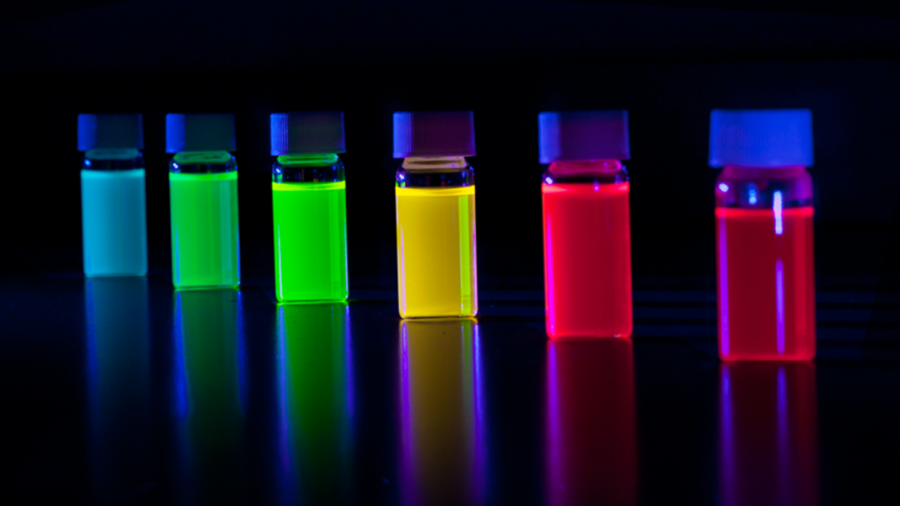Overcoming Pain Points of Perovskite QDs
Perovskite quantum dots (QDs) are nanostructured semiconductors that exhibit the general chemical formula ABX3, where X is the binding anion between the A and B cations. This formula is based on the composition of calcium titanite (CaTiO3), which has found limited commercial usage since its discovery in the mid-19th Century. Despite its commercial failings, the mineral played a foundational role in characterizing the perovskite structure and was consequently instrumental to research and development (R&D) of perovskite QDs.

QDs are an emerging technology that has already carved out a significant foothold in the consumer display industry. However, large-scale commercialization is limited due to cost and stability issues, which has fuelled a period of intense competition between distinct chemical formats. Currently, there are three primary chemistries underlying QD technology:
- Cadmium selenide (CdSe), one of the earliest iterations, now find limited use due to the material’s carcinogenic effects and its limited RoHS exemption.
- Indium phosphide (InP), engineered as an alternative to CdSe, has now also fallen under scrutiny due to toxicity concerns.
- Perovskite QDs based on cesium lead halide (CsPbX3) are increasingly preferred from a toxicity and performance standpoint, but stability issues have so far been of concern.
Perovskite QDs are immediately preferable over other established technologies due to their more robust RoHS compliance. They also display exceptional photoluminescent characteristics, with extremely narrow bandwidths that can theoretically be tuned to wavelengths across the entire visible spectrum of light. The promise of this composition- and size-dependent fluorescence is multi-faceted, including rapid emission rates, high brightness levels, and extremely pure color representation. In the context of consumer displays, this translates to greater coverage of next-generation color gamuts (Rec. 2020, DCI-P3, etc.). However, the stability issues of perovskite QDs must be overcome to unlock these game-changing capabilities.
Stable Perovskite QDs from Avantama
Whether they are based on metallic, organic, or inorganic anions, perovskite QDs have relatively weak binding strengths compared to competing compounds. This makes them unstable in response to heat and soluble in water. The problem of solubility is less of an issue in display applications than that of heat, where considerations have already been made for the poor thermal stability of QD films. These must be placed several layers away from the emissive light-emitting diode (LED) backlight, which generate heat as a by-product of luminescence.
At Avantama, we made stable perovskite QDs a top priority, and have yielded successful results. Using a proprietary synthesizing process, we can readily generate high-performance perovskite QDs stabilized with unique dopants. We are able to generate high-performance perovskite QDs, effectively offering multiple pathways to overcoming the pain points of perovskites and improving the technology’s commercial applicability in the display sector.
If you would like to learn more about the pain points and promise of perovskite quantum dots, simply contact a member of the Avantama team today.